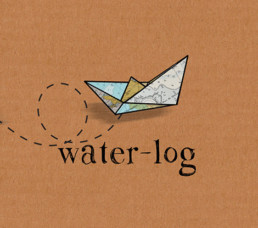
A boat is really a house combined with a car and put into an environment that constantly attacks it. Saltwater and sun destroy whatever they can without mercy. It’s a matter of constant maintenance as things will always break. Some items you can have back-up for, like an alternative GPS, a generator, or an extra ground tackle set up. But there is a limit to what we can carry and few boats boast a second dinghy, a back-up stove or a spare mast.
The real trick is all about attitude and how well you roll with the punches. Things fail and no amount of money or care can change that especially if you actually use your boat and go sailing. But if you can lessen the emotional toll that each breakage takes on your mood then it becomes easier to deal with what the seas throw at you. Keeping your sense of humour is vital and helps you to consider each hiccup to be a lesson in disguise.
There are the silly days when your breakages aren’t vital kit but annoying glitches in your creature comforts: all in one go the inverter overheats and catches fire, a saltwater pump suddenly fails and sends you rushing for the seacock and then the motor goes in an electric fan which you were relying on for easing the heat of the sweltering tropics. The bigger issues, like the loss of a sail, can surprise you as a mainsail may seem to be in great condition until that one windy or stormy occasion when the fabric gives way and you’re left with streamers.
Some failures you simply learn to live with due to maybe limited finances, geographic remoteness or sheer lethargy. You might be content with a dinghy that needs re-inflating each time it’s used; a faulty chartplotter can be replaced with the right app and charts on your phone; and the burner on our stove that won’t stay lit can wait until we encounter problems with the other one. Our chest fridge worked when we left England, behaved funnily by Gibraltar, and totally conked out mid-Caribbean. In the end we were without refrigeration for a full 8 months but it proved easier than you’d imagine, particularly as it’s our main power drain. We simply kept buying ice to fill up the defunct chest-housing and used it as a cooler until we bought a new compressor
Ready for the chance of our windlass breaking we learned how to anchor by hand. That’s not straightforward when you’re talking about 60 metres of chain and a 30kg anchor. But we reasoned that it would be a sensible skill to master and when the motor did fail we were prepared.
We still have a broken autopilot. Before we had children we enjoyed hand-steering and would do ocean passages with extra friends so there were always enough willing hands. When we chose to use the autopilot we discovered that it wouldn’t hold a course. Yet another malfunction but we became better sailors as a result. It meant that we understood sail-trim more and balanced the boat. Years on from that and we still have autopilot issues that crop up in inconvenient places like equatorial and diesel-heavy Indonesia.
Our automatic bilge pump never worked but was only an issue when we planned to leave the boat during hurricane season. Without the deadline of the impending downpours, it would probably still be on the list. Using the manual pump gave us a better understanding of how much saltwater we took in through the stern gland and how much freshwater we had from rain.
Sometimes you tackle a whole bunch of problems in one go. We had a period like that when we first bought our yacht but even the best quality parts can’t last forever and we found ourselves explaining to family and friends that nothing can make your boat indestructible. This is useful when planning for an ocean crossing: you walk around and go through the boat both above and below decks and ask yourself “what happens if this breaks?” trying to keep calm and level-headed about the consequences. Some of these running repairs and damages you can prepare for and others will be tests of your engineering ingenuity. It’s amazing how much you can do with duct tape…
And somehow you never lose hope that each new repair could perhaps be simpler and that this one element of your boat will now be flawless and failsafe. But, in the event that it’s not, just don’t let it break you.
